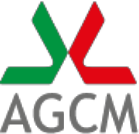IC44 - Fuel: Antitrust Authority begins fact-finding study on Platts indexing and the distribution network
PRESS RELEASE
PRESS RELEASE
FUEL: ANTITRUST BEGINS FACT-FINDING STUDY ON DISTRIBUTION SYSTEM AND THE APPLICATION OF PLATTS PRICING. FOCUS ON WHITE PUMPS.
The objective is to gauge the congruity, adequacy and transparency with which the index is used to set prices and find ways to make this market more competitive. Independent distributors and their roles, geographic distribution and development potential will be examined up close in collaboration with the Market Protection Unit of the Guardia di Finanza (Italian Tax Police). Industrial prices held consistently higher than the European average
To find ways to increase competition in the fuel market and to gauge the congruity, adequacy and transparency with which the Platts benchmarks are applied to determine pricing - these are the objectives of an Antitrust fact-finding study that was prompted by the industrial prices for motor vehicle gas and diesel fuels, whose absolute levels are consistently higher than European average.
From an Antitrust perspective, the objectively oligopolistic market for fuels has recently been witnessing a variety of phenomena that could heighten competition, such as the proliferation of self-service options offered at lower prices than full-service and the abandonment of unified nationwide price recommendations by oil companies in favor of differentiated pricing policies. Most importantly, growth has been witnessed in the number of white pumps, which are challenging the traditional equilibrium among oil companies by offering lower retail prices than traditional distribution stations.
In collaboration with the Market Protection Unit of the Guardia di Finanza (Italian Tax Police) (with its initial data bank), the Antitrust Authority has thus decided to draw a picture of the number and geographic distribution of independent distributors in order to analyze their prospects for further proliferation and potential obstacles to growth and development.
Given the competition-stimulating role of the white pumps, the Authority's primary task is to pinpoint the specific mechanism behind the competitive pressure felt by colored pumps, as well as any structural pre-conditions for further development (e.g., proximity to refineries or coastal depots). The supply channels for white pumps also need to be analyzed in terms of their reliability, structure and stage of development because of the real risk that oil companies, who together with wholesalers control the supply side for independent pumps, could manipulate wholesale supplies in efforts to recapture their competition-based setbacks in retail margins.
Rome, 28th March 2011

